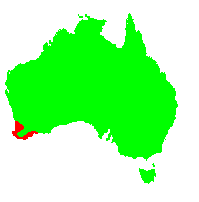General Description:
Kunzea is closely related to the genus Callistemon (the bottlebrushes) and also bears some similarity to Melaleuca and Leptospermum. There are about 40 species occurring in all states and territories. One species also occurs in New Zealand. They are small to medium woody shrubs and the majority occur naturally in south Western Australia.
Some of the main differences between Kunzea and its close relatives are:
- The five sepals and petals are deciduous (persistent in Callistemon).
- The stamens are longer than the petals (shorter in Leptospermum).
- The stamens are free (united in five bundles in Melaleuca).
- Seed is released from the ripe fruit annually (usually retained on the plant in the other three genera).
Kunzea ericifolia is a large shrub from 2 to 5 metres high. It has linear leaves about 10 mm long by 1 mm wide. The flowers are cream to pale yellow and occur in clusters at the ends of the branches. Flowering occurs in spring and the flowers are followed by small 1-celled fruits which release numerous small seeds when ripe.
Two subspecies are recognised: subsp. ericifolia and subsp. subulata. The differences between the subpecies are fairly subtle – subsp. subulata is found further east than subsp. ericifolia and is usually smaller in habit.
This species has been in cultivation for many years. It is particularly suited to Mediterranean climates (dry summer – wet winter) but will also grow in more humid climates. It requires good drainage and a sunny or lightly shaded position. It withstands at least moderate frost.
Propagation is easy from both seed and cuttings. If seed is being collected, the plants need to be kept under observation or the seed will be lost.

Kunzea ericifolia
Photo: Murray Fagg – Australian National Botanic Gardens
 Australian Native Plants Society (Australia)
Australian Native Plants Society (Australia)